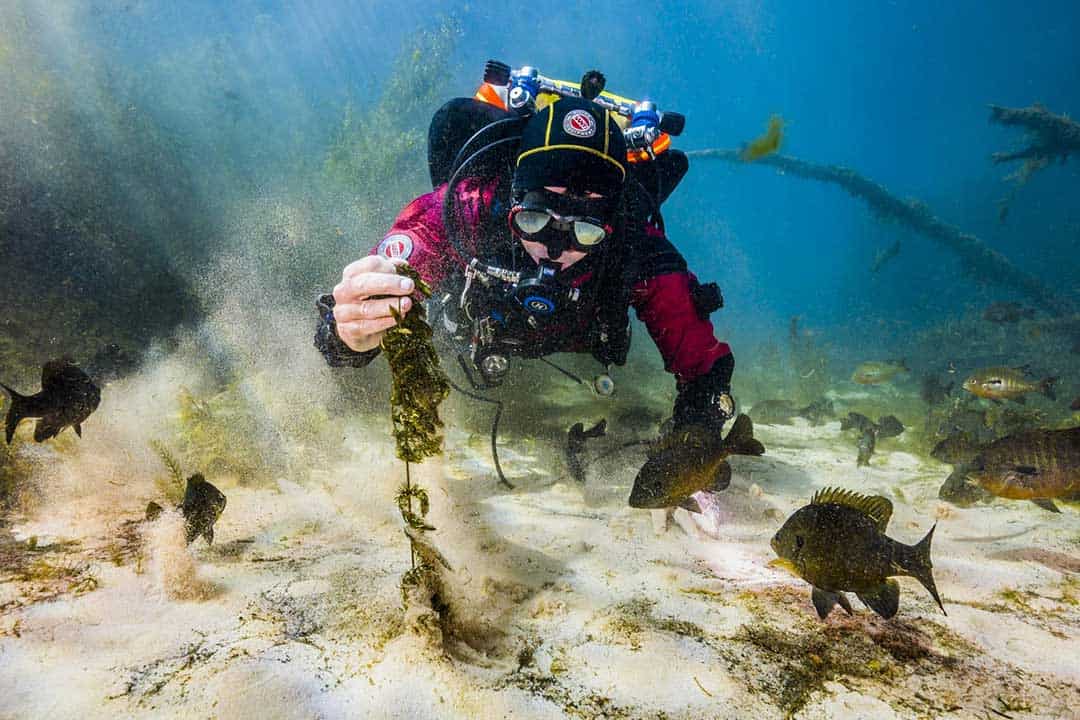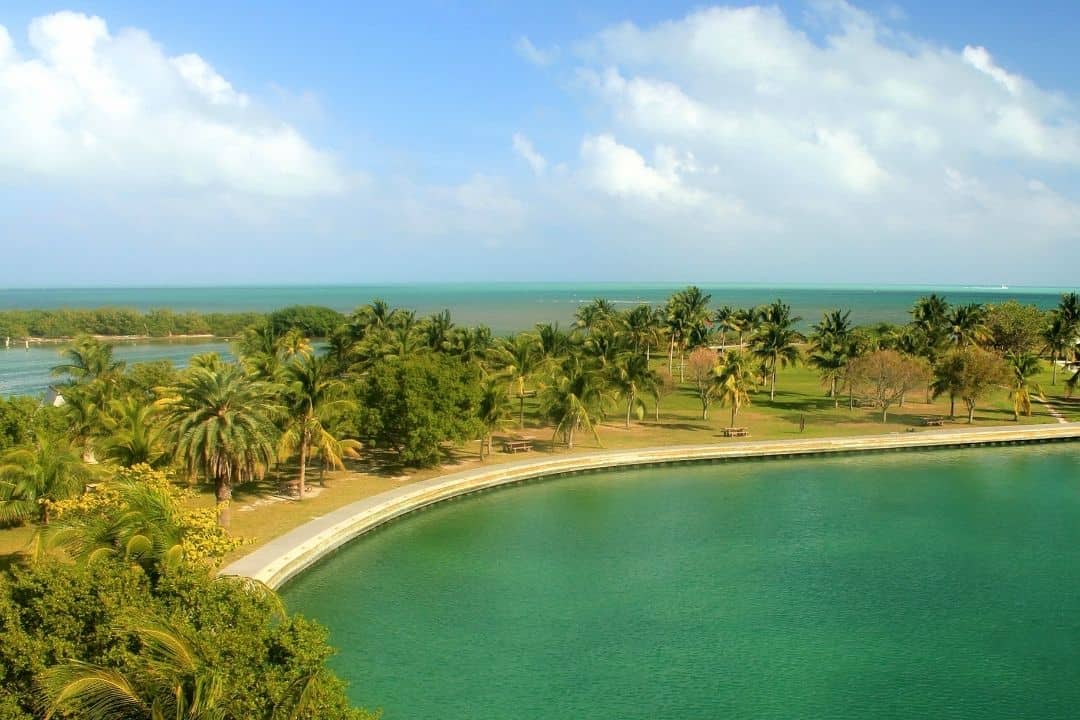Though it may come as a surprise to many, the coast of California offers some of the most amazing diving in the United States.
Many may be put off by the idea of the colder water, but the California coast is at the edge of a tectonic plate, making it a rocky winter wonderland full of majestic kelp forests and utterly unique topography and wildlife.
The California diving community is full of tough, dedicated, and highly skilled individuals. Even during the warmest months, conditions can be difficult, and the amount of gear necessary to keep warm is cumbersome.
However, on the days where conditions cooperate and the visibility is pristine, California diving is magical.
What’s more, a diver trained in California for their open water certification will be one of the more knowledgeable and capable divers out there.
Dive sites in California are often accessed from shore, but there are a number of islands off of the coast (accessed by boat) that attract divers, as well, because they can offer better visibility or denser wildlife.
That being said, shore diving is a way of life in California, and reaching a dive site can often be as much work as the dive itself.
Some spots have stairs down into the water, and some spots have a rope dangling down a cliff face to rappel with your gear to the shore! No matter the site, the California diver is a different breed, so it goes without saying that the diving is unique, as well.
For divers that have yet to venture into California waters, it can be overwhelming to decide where to dive.
The following must-see dive locations are broken down by region, but there are hundreds of dive sites within each area that can be discovered through local dive shops and charter boats (very few are mentioned here). Get ready to explore!
Northern California (NorCal)
Farallon Islands
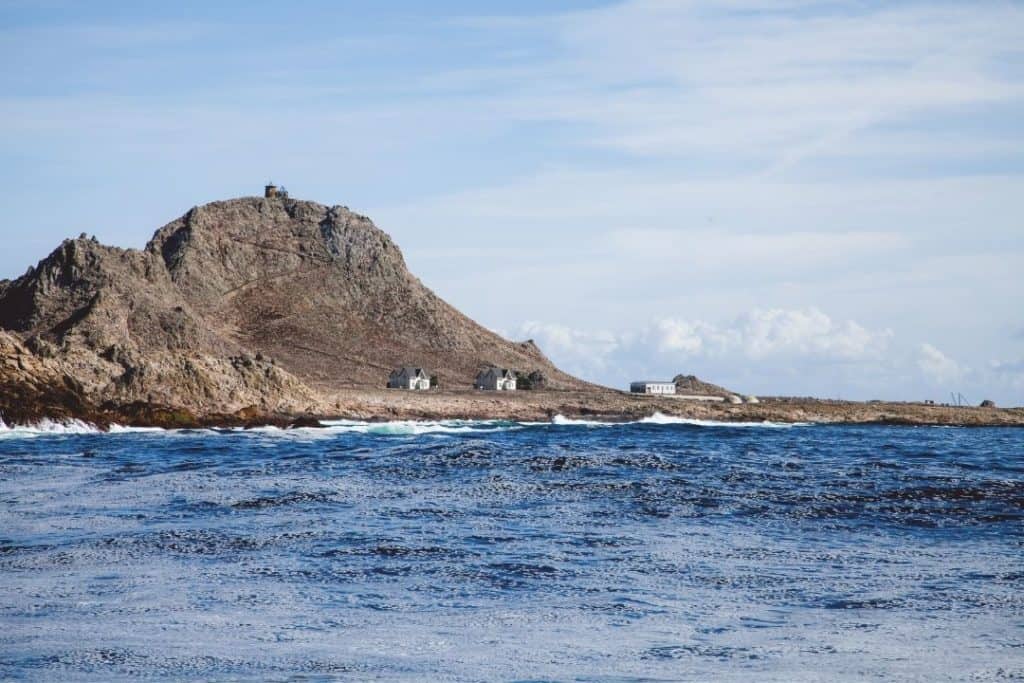
30 miles off the coast of San Francisco, these formidable islands are nestled in a marine reserve that is larger than the state of Rhode Island.
The islands are famed for acting as a sanctuary to a variety of marine birds, thousands of seals, sea otters and sea lions, and of course they are renowned for hosting great white sharks (generally in the fall) for part of their annual migration.
During the couple of months white sharks are around the island–roughly September to November–divers and snorkelers, alike, flock to experience the cage interactions with great whites.
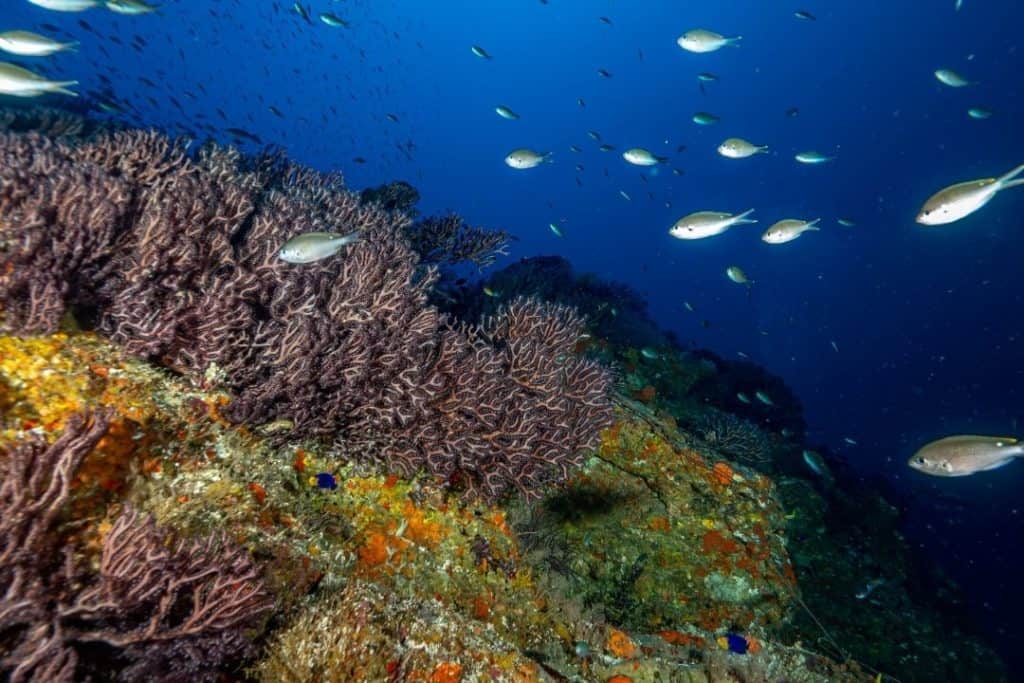
When the sharks have moved on, recreational diving takes place around Middle Farallon Island and Noonday Rock pinnacle during the spring and summer.
Be sure to have your advanced and nitrox certification, with experience in tougher conditions, before diving in the farallones national marine sanctuary.
For more diving in the bay, checkout my article about the top diving spots in the san francisco bay area.
Monterey Bay
Known for its wildlife diversity (flaunted by the famed aquarium), Monterey Bay boasts a deep canyon right offshore that ensures consistent upwelling of rich nutrients, and this creates a diver’s paradise!
There are tons of dive sites dotted all around the bay, but here are some well-known spots to check out:
Breakwater Cove
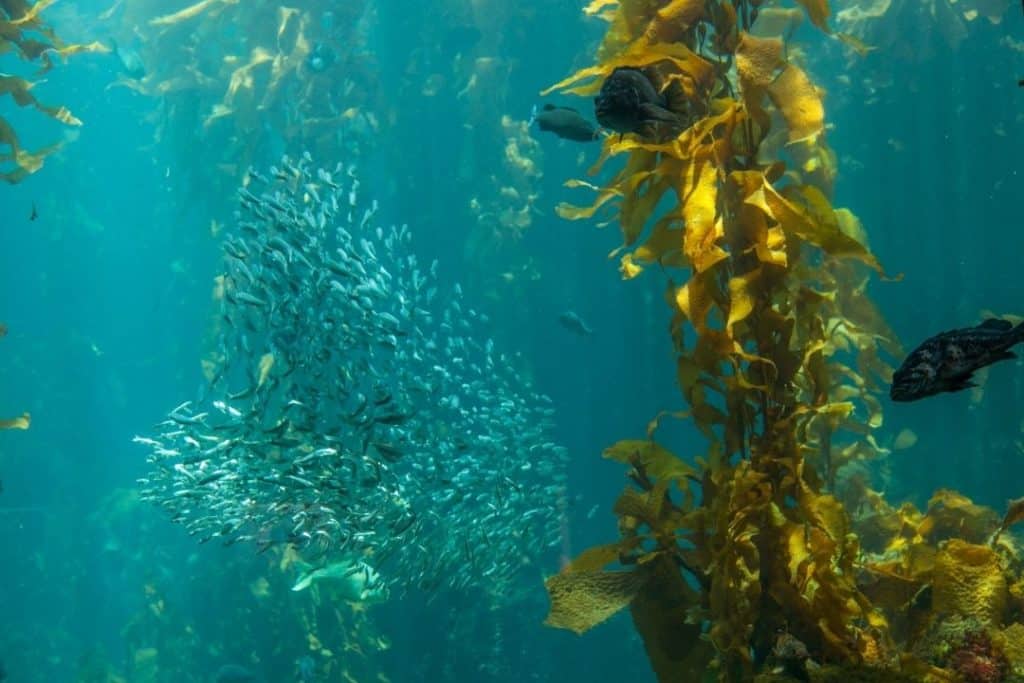
Protected from the rough open ocean, this cove is a great spot for beginners and is a macro photographer’s heaven.
With tons of nudibranchs, lobster, and bright corals, it is also a great and easily accessible spot for night diving.
Hopkins Marine Station
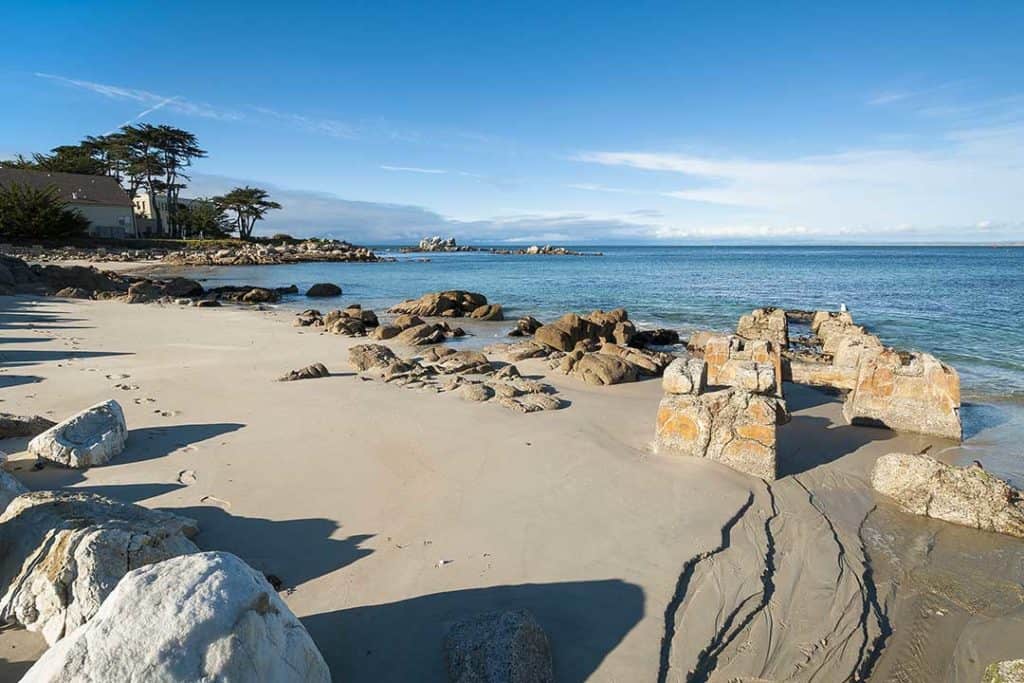
A short boat ride out from the marine station, divers can explore a reef system next door to Monterey Bay Aquarium that’s been protected since 1931, searching the magnificent kelp forest and eelgrass beds for octopus and other amazing critters.
This spot is used often for marine biology or ecology research dives with Stanford students, so you know there’s great stuff to see!
Point Lobos and Carmel Bay Reserves
Carmel Bay is known in California as one of the most beautiful stretches of beach you will ever encounter.
What many may not realize is that the iconic California cliffs overlook a marine reserve that also offers some of the most amazing underwater life in the US (and many would argue, the world). Here are some of the hot dive sites:
Carmel Pinnacles
Nestled in a relatively shallow, protected cove, this is a fairly easy dive full of colorful life scattered across the unique pinnacle formations and swim throughs.
If you have never dove a pinnacle, it is a truly wonderful experience, and these pinnacles are bursting with life to explore.
While there are shelves to explore in shallow water, the outer edges of the pinnacles drop off to deeper than 100 ft with no bottom.
It is best to have more than 25 dives under your belt with confidence in your buoyancy before diving a formation like these pinnacles.
North Monastery Beach
Dubbed “The Trench” because of it’s diver access to the Monterey Canyon, upwelling ensures that abundance of wildlife at this dive site.
Be warned — conditions can get rough during the 200 yard surface swim, and the site is essentially a wall with no bottom, so make sure you’re an advanced California beach diver before visiting this site.
Whaler’s Cove and Bluefish Cove

At these dive sites, you enter through Whaler’s Cove into the wondrous topography of scattered boulders and kelp forest, and if you continue out you will reach a sandy trench and deeper waters off a wall to the East.
Divers can also surface swim or kayak around to Bluefish Cove to access a giant sea wall starting at 40 ft and sloping down below 100 ft.
Point Lobos
At Whaler’s Cove and anywhere else within the Point Lobos Reserve boundaries, divers must reserve a permit to enter (boaters and kayakers, too).
Mini caves and overhangs, pinnacles, and anemone covered underwater walls scatter the area, making it a coveted scuba location.
With all these nooks and crannies, divers can find wolf eels, sea lions, seals, and all the other life along the California coast scuba diving spots.
Lake Tahoe
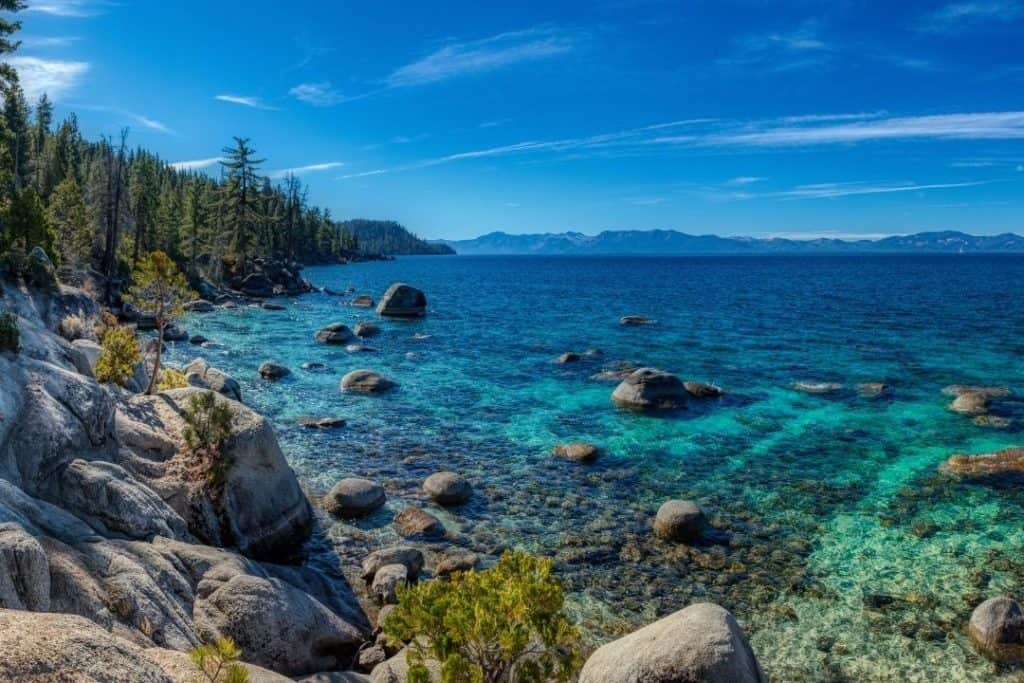
Situated in between California and Nevada, Lake Tahoe is an off-the map, under-represented dive location. If you’re looking for a truly unique dive experience in a region with lots of other outdoor activities to offer, Lake Tahoe should be on your shortlist.
The Emerald Bay Maritime Heritage Trail is one of the more popular dive sites, as it highlights an underwater “trail” of historic barges, boats, and other artifacts.
There are also dive sites around Lake Tahoe that feature sunken forests, shipwrecks and sunken buses, cars, or planes, and sheer cliff faces.
Note: You will need to be trained for altitude diving to experience Lake Tahoe dive sites, and the water is cold enough to require a drysuit year-round.
Southern California (SoCal)
Channel Islands Marine Reserve
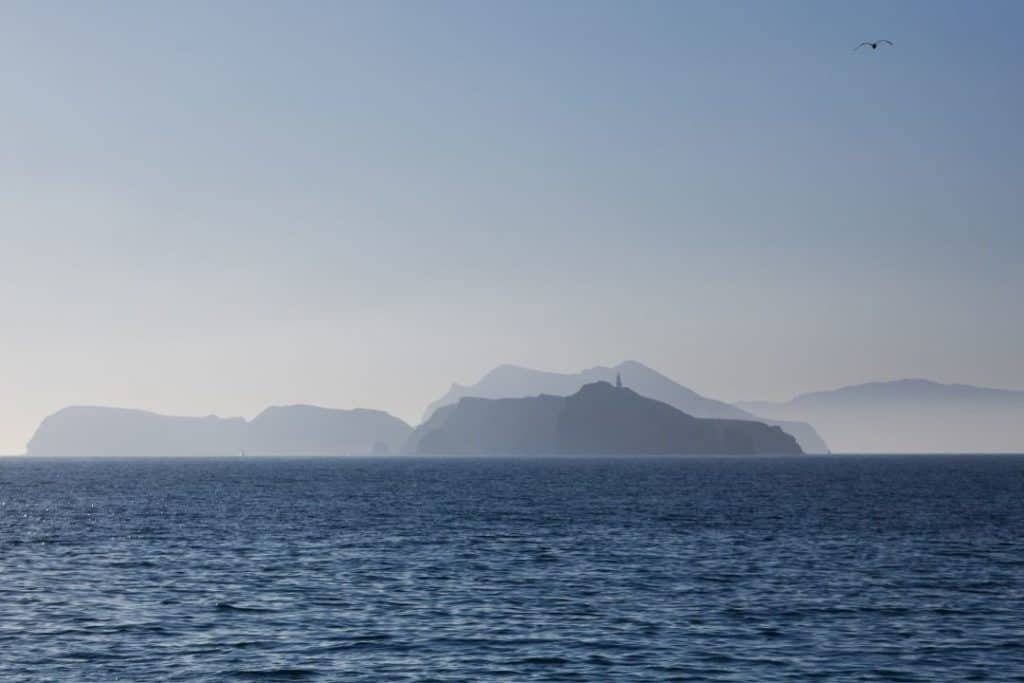
Some of the most unique diving in California can be found along this 150+ mile network of islands that stretches parallel to the coast ranging 10-70 miles from shore.
The Northern Channel Islands consist of Santa Rosa, Santa Cruz, San Miguel, and Anacapa Islands, while further south you can find Santa Catalina, San Clemente, Santa Barbara, and San Nicolas Islands.
The most popular scuba diving spots are the Santa Cruz island, Anacapa, and Catalina.

San Clemente and Santa Barbara (known for its sea lion rookery) are also great dive spots, but are a bit too far for day trips, and therefore a little less traveled for diving unless you take an overnight liveaboard trip.
In general, these islands offer a variety of sites with amazing rocky terrain, sandy bottoms, shipwrecks, and magical kelp forests.
Divers can see giant black sea bass, bat rays, eels, a variety of sharks (a great white if you’re super lucky), octopi (if you search), lobster, sea lions, an abundance of reef fish, and numerous rays/skates and invertebrates. Here are some of the top sites:
Catalina
Farnsworth Banks
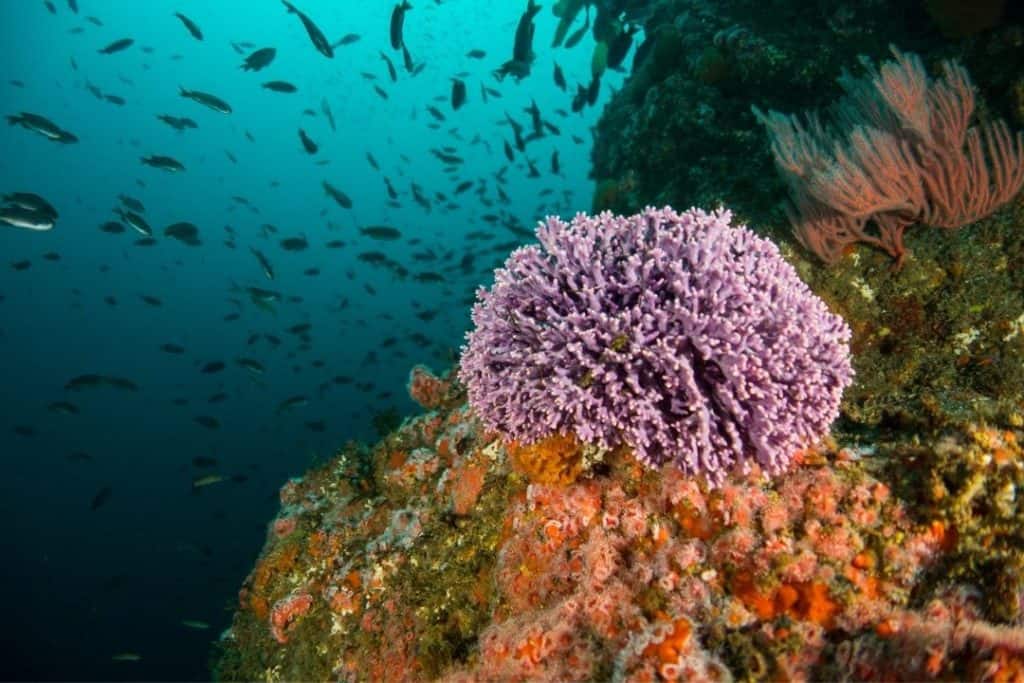
This site is for advanced divers, because it is essentially just a collection of pinnacle rocks off the backside of the island, and therefore subject to the conditions of the open ocean.
The surface can be choppy and full of currents, but the pinnacle under the surface offers one of the most unique sites in California.
The pinnacle is covered in purple hydrocoral, which is a rare sight, and there is a bonus wall of yellow anemones (known as the Yellow Wall).
While most of the wildlife seen here can also be spotted around all the islands, the abundance of spottings for schools of barracuda, torpedo rays (watch out, they’re electric and aggressive), scorpionfish, and more, is significantly higher due to Farnsworth’s mid-ocean positioning.
Starlight
Located near the West End of Catalina Island, Starlight is a dive spot chock full of thick kelp forest and colorful anemones and invertebrates that cover the rocks so thoroughly, you might believe you’re looking at a tropical coral reef.
Keep an eye out for cute little horn sharks, bat rays, and abalone hidden around the rocks and in crevices. This site isn’t on many dive maps, but local boat charter captains will definitely know what you’re talking about when you request this dive site! It’s a crowd favorite.
Avalon Casino Point
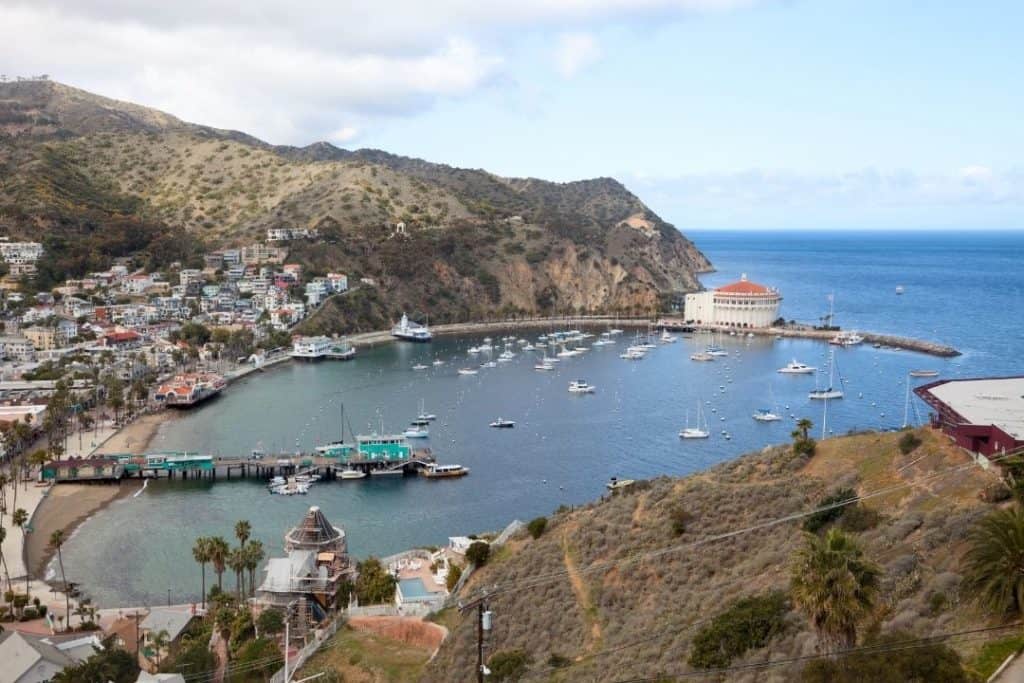
Casino Point is one of the most popular sites to scuba dive in Catalina because it is extremely protected from the open ocean conditions, and serves as a breeding ground for many varieties of marine life.
This ensures that there is ALWAYS a huge abundance of sea creatures like reef fish and colorful invertebrate life like sea anemones crusting the rocks, and it is uncommon to visit the avalon underwater dive park when it is lacking a healthy kelp forest.
Giant Black Sea Bass are an almost guaranteed sighting in the summer and fall if you know where to look (if it’s your first time at the site, don’t be afraid to ask some locals where to find the giant sea bass), and there is a small squid boat wreck hovering between 60-80 feet depending on the tide.
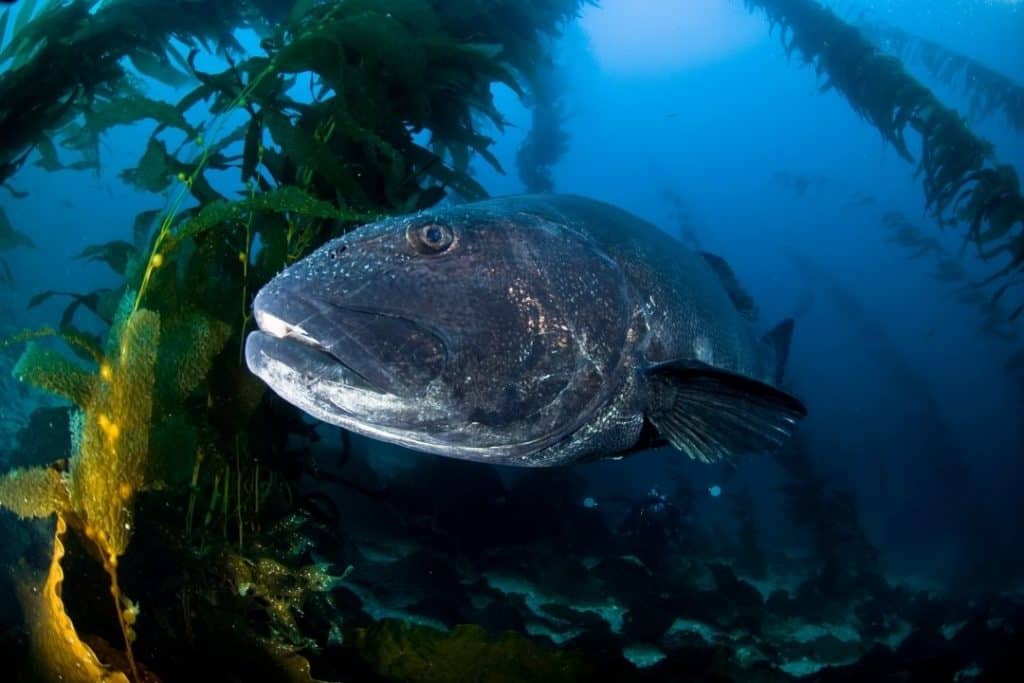
You can also find an underwater plaque dedicated to Jacques Cousteau at roughly 40 ft depth about 45 degrees to the right off the steps as you enter the water.
The dive site is extremely convenient, as there are stairs directly into the water (no sandy beach to walk through), and the island dive shop parks a trailer right near the stairs for easy access to tank fills and gear rentals as required.
Emerald Bay / Indian Rock
Emerald Bay is a protected cove that offers calm conditions, areas with an easy sandy bottom full of bat rays and turbots, and a small rock island that extends to about 70 ft deep out into the ocean.
You can dive along one side of Indian Rock and in the shallows and sandy patches, or spend your dive going all the way around the rock (generally not recommended to move your bubbles out of sight of the boat captain keeping track of the divers from the boat, though).
These sites almost always afford divers gentle conditions and clear waters for a solid California dive experience.
Oil Rigs
While there are many oil rigs along the California coast, those off the coast of LA by the names of Elly, Ellen, and Eureka are frequented by divers looking for a unique experience.
These dives are through the underwater pylons of the rigs in the open ocean, so divers must be advanced certified and intermediate divers capable of the live-drop entry and exit (the boat cannot anchor with no bottom, so divers enter and exit the boat while it is moving in neutral).
The pylon structure of the oil rigs offers an amazing structure for artificial reefs to develop, and the open ocean location usually provides clear conditions and tons of critter activity (although this can also mean there may be a fairly strong current).
At the oil rigs you commonly see sea lions playing in your bubbles, filter feeding sea creatures, tiny jellyfish and critters extending from the pylons, crustaceans crusted everywhere, and the occasional open ocean creature stopping for a rest (like Mola Mola or, if you’re really lucky, a gray whale!).
You can also count on spotting sea stars, fish, and nudibranchs, and if you go during scallop season you can eat fresh scallops underwater!
But watch out for those sea lions–they’ll swoop in and take the scallops off your hands before you can reach your mouth if you’re not careful.
Every couple of years, the pylons get scraped down for maintenance — be sure you trip doesn’t get scheduled right after one of these cleanings, or you won’t have much to see.
Great Los Angeles Area
Malibu
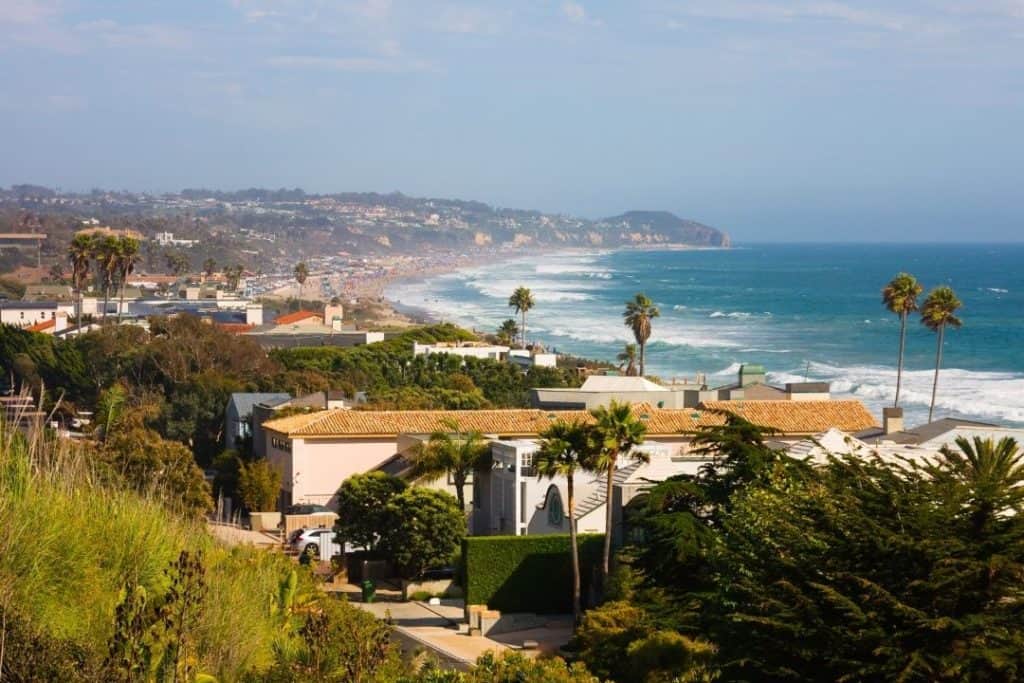
Beach diving along the coast of Malibu is plentiful, and there is a mix of beginner and advanced level sites.
Access can be slightly difficult, and entry spots can be hard to find, so divers definitely need to do their research before showing up to scuba dive the Malibu coast.
Staircase, Leo Carillo, Nicolas Canyon, Point Dume Pinnacles, Malibu Road, and Big Rock are some of the more popular scuba diving spots, offering thick kelp forest, rocky reefs with some spots of bright invertebrate cover, and lots of nudibranchs and lobster.
There are also great chances of seeing horn sharks, bat rays, angel sharks, guitarfish, and a variety of reef fish.
Naples Reef
Located just off the shore of Long Beach, this remote location in the Santa Barbara Channel is for experienced divers; pinnacles, arches, and walls crusted in anemones make Naples reef a popular spot for marine biologists and recreational divers.
Vets Park

This beach site in Redondo is one of the most trafficked sites in SoCal. While it is a fully sand site (so no reef or kelp forest to speak of), there are underwater pipelines that attract crustaceans, and a plethora of muck diving critters to be spotted with a careful eye.
This site also hosts seasonal phenomena like the squid run, and is an amazing night dive location to hunt lobster or spot an octopus “walking” along the bottom.
There is a metered parking lot and a stairway down to the beach, along with a sloping sand entry to make for a relaxing beach dive.
Many training courses also take place on this dive spot, and on Saturday mornings you will find the area overflowing with divers!
Palos Verdes
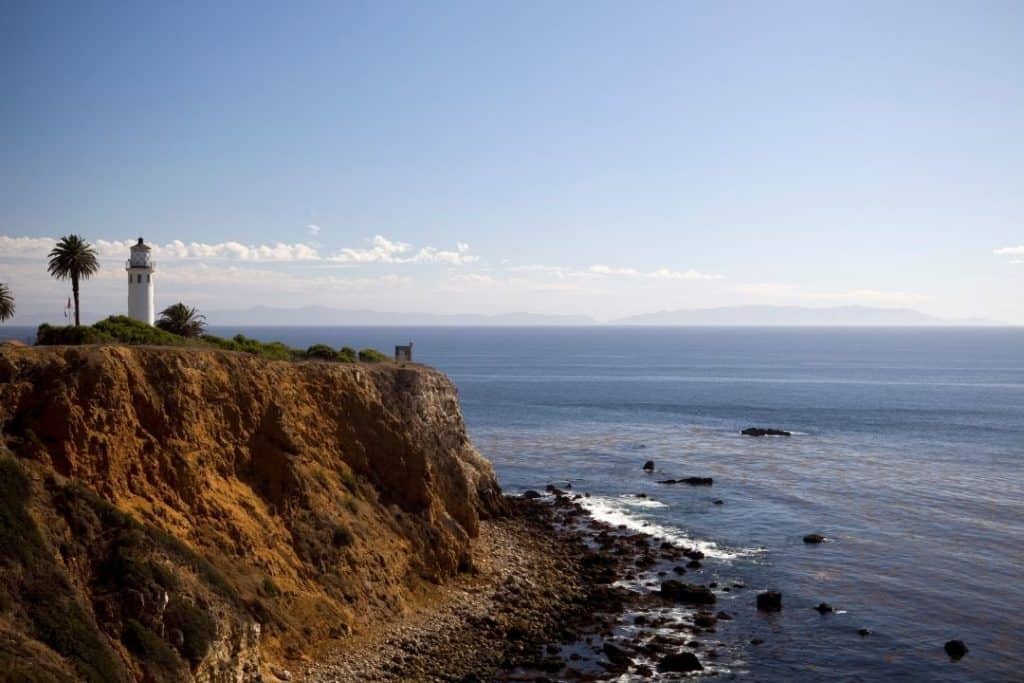
You can see all the usual suspects at the shore diving sites in this region, but be prepared for difficult entries!
This is the place where you may have to hike in or rappel down some rocks to access the beach where you’ll enter for a dive.
If you’re experienced enough, the difficult entry here means you’ll likely be the only divers — private experience!
Not all sites have a difficult entry, but you’re likely to have a strenuous walk to the beach, at minimum.
Terranea Resort
Shallow reef and healthy kelp forest surround this resort, allowing easy access for divers and snorkelers, alike.
Entry can be rocky, but there is an abundance of life just off the beach.
Laguna
Laguna is a continuation of California’s wonderful rocky reef structure in Orange county, but it can be a bit more exposed to the elements.
Most of the sites are more easily accessible than somewhere like Palos Verdes, but definitely make sure you check the conditions and dive with an experienced buddy the first few shore dives here.
Shaw’s Cove
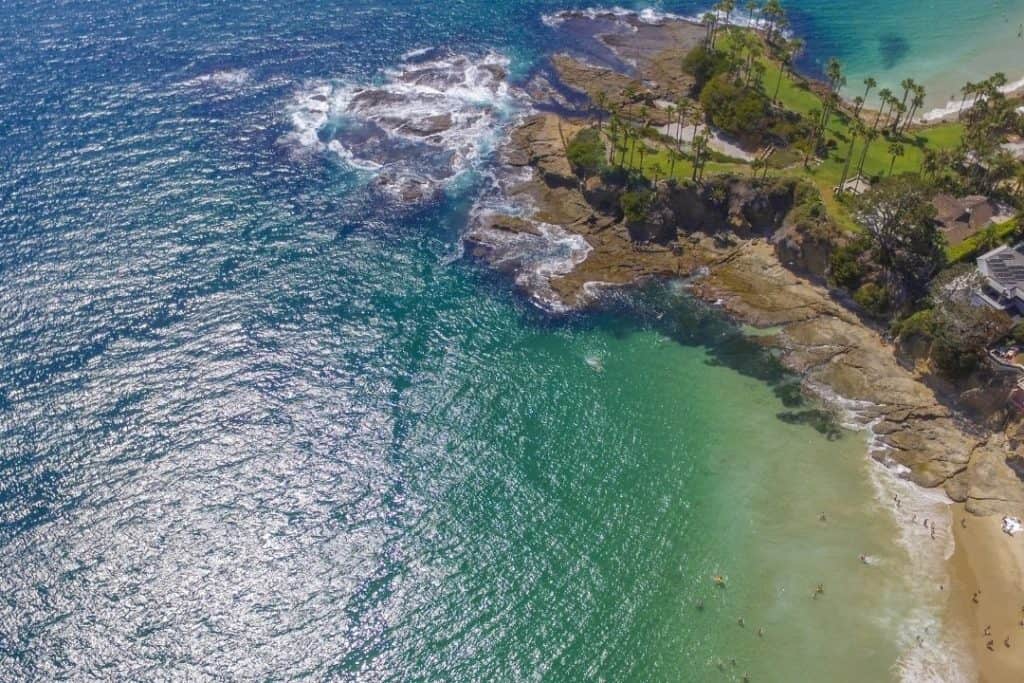
This site has an outer reef full of gorgonian sea fans, nudibranchs, and reef fish. When the tide is high, you can swim through a beautiful crevice to be surrounded by sea fans and fish.
Watch out for occasional surge and ensure your buoyancy is adequate — you don’t want to be banging into the reef and killing the precious foliage!
San Diego
Wreck Alley
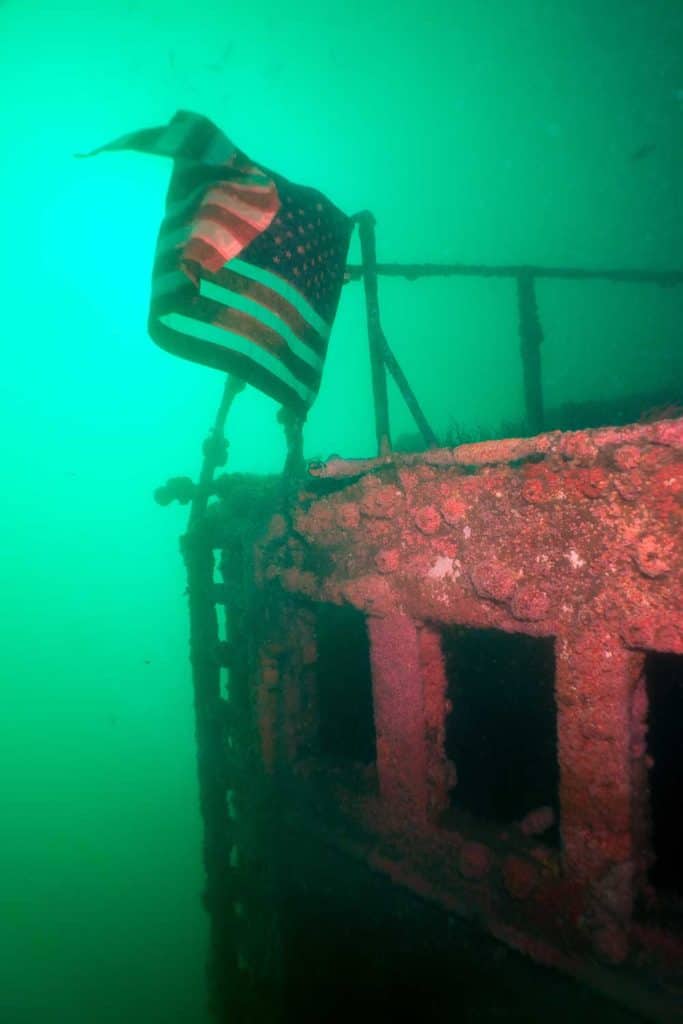
The Navy has been purposefully sinking ships off the coast of San Diego for decades. While, in practice, this is not the most friendly environmental move, the ocean has taken the opportunity to use the ship surfaces for more reef, which means divers get to experience shipwrecks full of life!
Unlike many other wreck dives, these ships are sunk in relatively shallow water, and are accessible to recreational divers.
There are 8 wrecks in varying depths, but the HMCS Yukon is the most well known (the Ruby E also used to be very popular, but recently collapsed during a storm and is now just a shell of what it once was).
The Yukon was sunk the most recently, in 2000, and is therefore fully intact and penetrable (with the right training).
Resting on its port side at about 100 ft, you dive the wreck between 70-90 feet to explore the propellers, gun turrets, or tight internal corredors (including the engine room!).
Matlahuayl State Marine Reserve (La Jolla Cove)
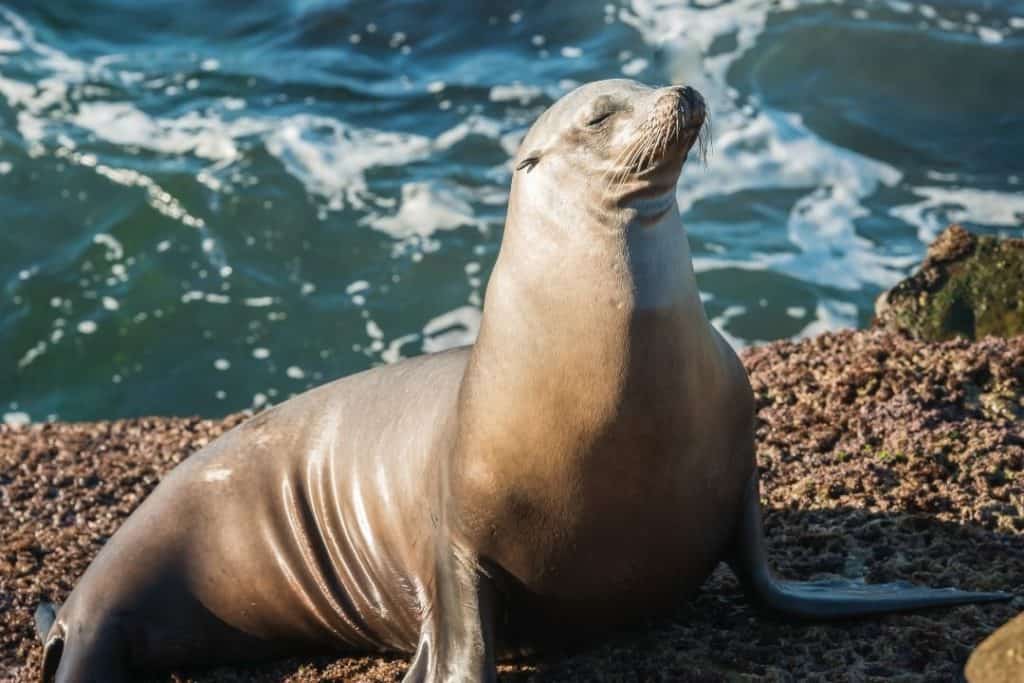
La Jolla Cove offers the quintessential diving experience.
There is an abundance of parking and easy access to the beach, a nice sloping sand entry into the water, and it is a shallow dive site with docile conditions, tons of rocky reef, playful sea lions, and even leopard sharks during the right time of year.
If you’re looking for a more advanced experience, surface swim out to the canyons for a dive along the Main Wall.
This site and the surrounding area is where Scripps Canyon and La Jolla Canyon converge to provide a no-bottom wall dive equipped with overhangs and spotted with caves (lots of places for fun critters to hide!).
Diver’s Guide to the Region
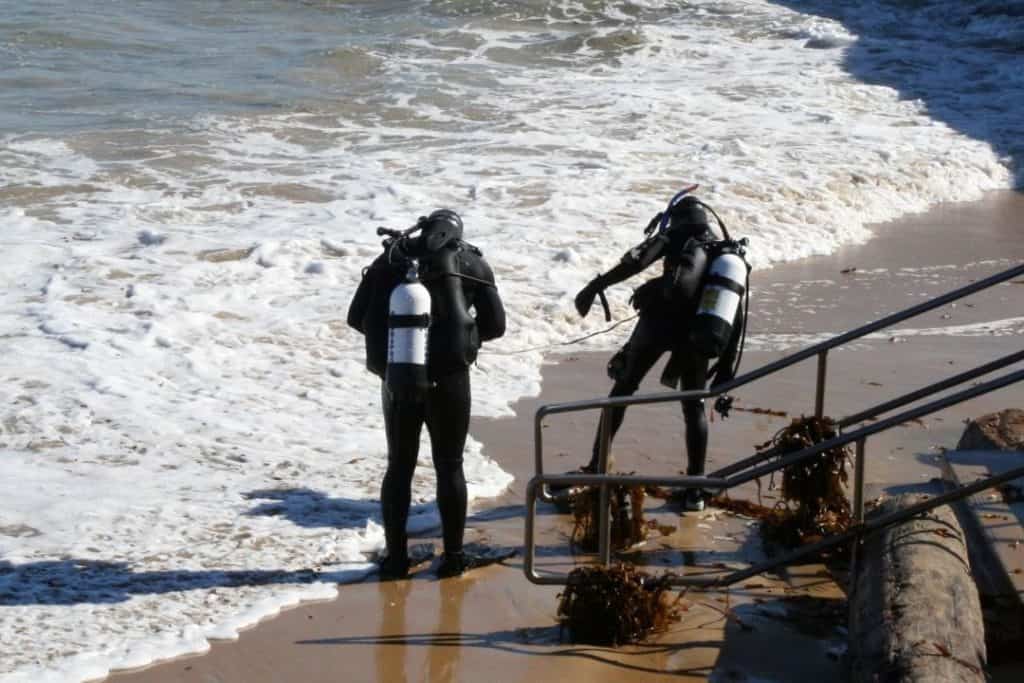
California has always boasted an amazing, rocky reef habitat full of kelp forests. This has only gotten better since the state decided to confirm a network of Marine Reserves and Conservation areas to protect the habitat and foster it’s health.
Many of these marine parks are listed above (or the dive sites listed are within a marine park), but you can see the full list of marine protected areas on the California Fish and Wildlife website.
Local divers in California dive year-round, but the best combination of topside and underwater temperatures is usually late summer into fall.
During this time, the weather and waters are usually warmest (the warmest the water gets is mid 70s fahrenheit), and the visibility is best due to lack of storms and upwelling.
Throughout the winter, diving visibility can also be great between storms, despite the cold water.
January through April is generally the coldest (water temp can dip as low as 52 degrees fahrenheit) and has the most turbulent underwater conditions, but there can be random days with fair visibility that result in a great dive or two!
Unlike international dive tourism, the dive tourism in California is more of an independent experience.
You don’t book dives through a tour boat to be led on a group dive by a divemaster, and the boats don’t come pick you up at the end of a dive — you and a buddy stick together on a dive, navigate yourselves, and begin and end your dive at the anchored dive boat.
If it’s your first time diving in California, it’s definitely better to book a dive boat ticket and buddy up with an experienced local diver or buddy team.
Once you’ve got a few boat dives under your belt, you can start branching off into entry level shore dive sites and work your way up. Lean heavily on the dive shop expertise for gear needs and site recommendations for your first dives!
Explore hundreds of other Southern California Dive Sites or lists of the best dive sites in California!
There are hidden gems everywhere, and you will find a different “best of” list in every coastal city you visit.
Did we miss any of your favorite sites? Have you been to any sites listed above and have a story to tell? Drop it in the comments section!
